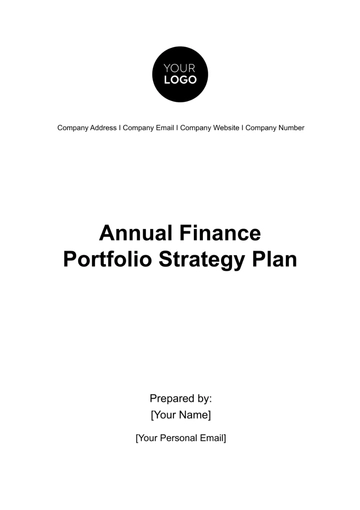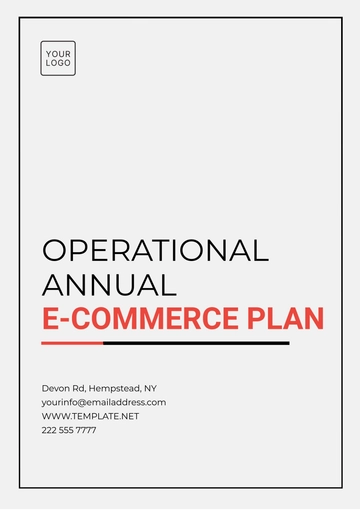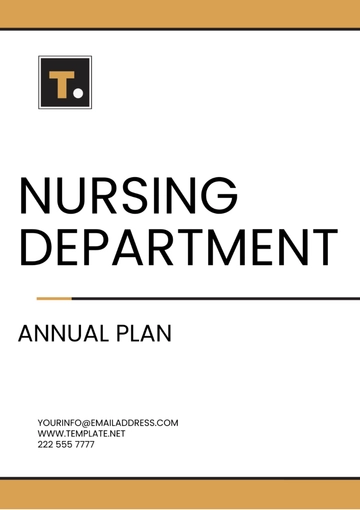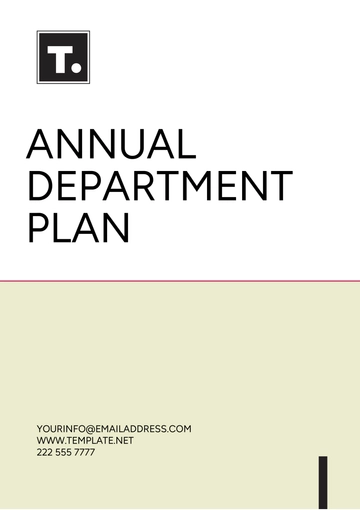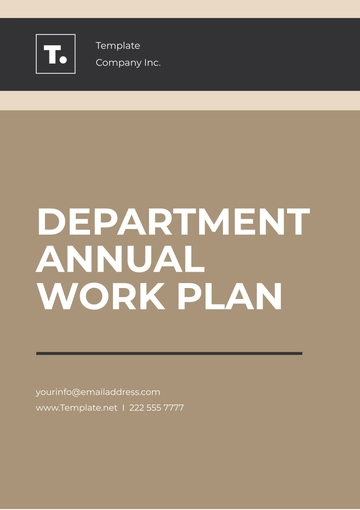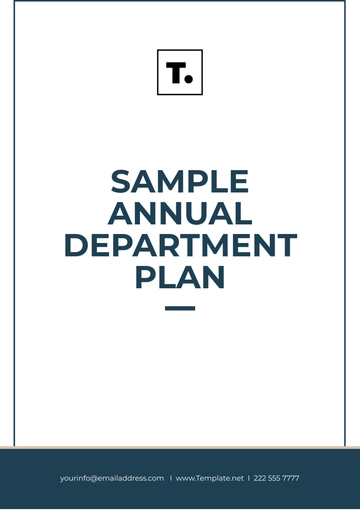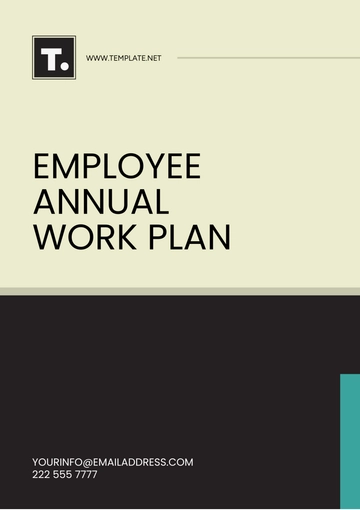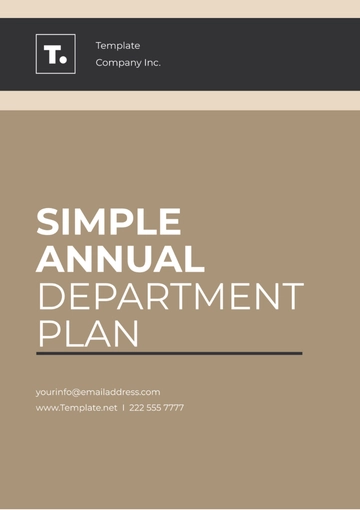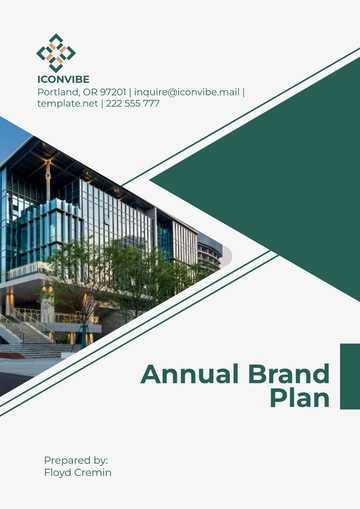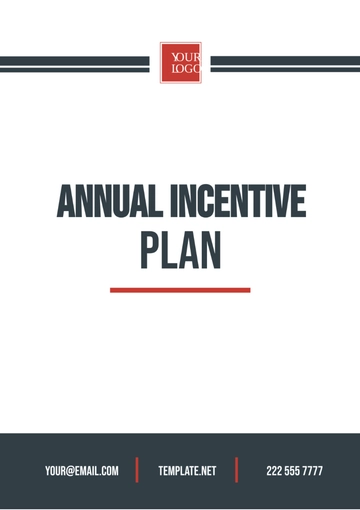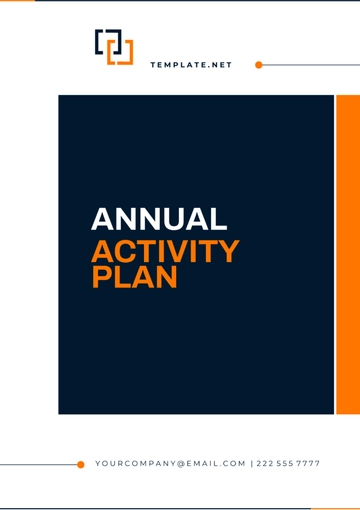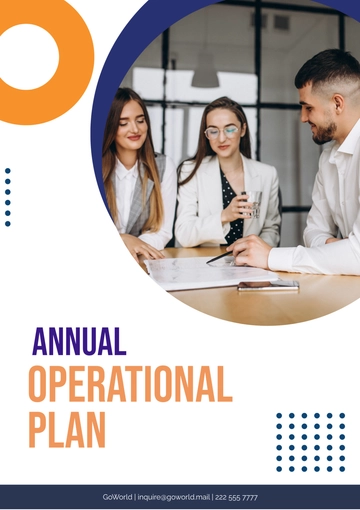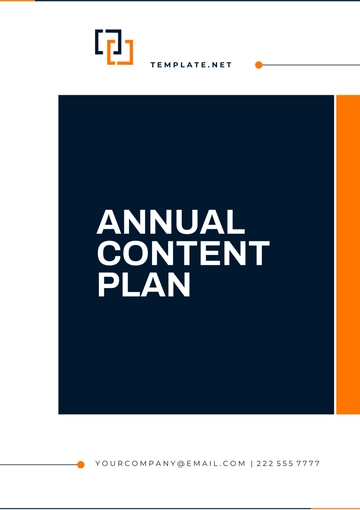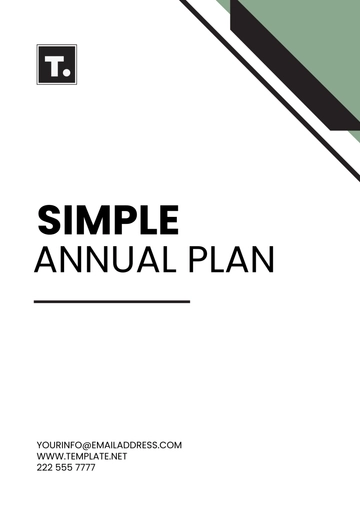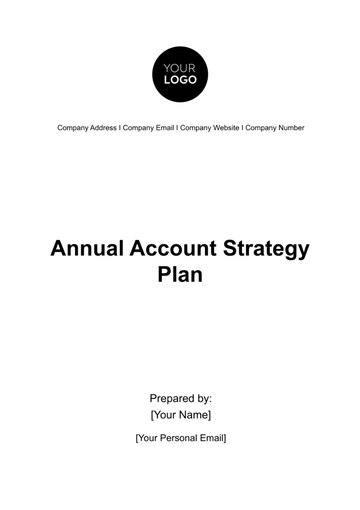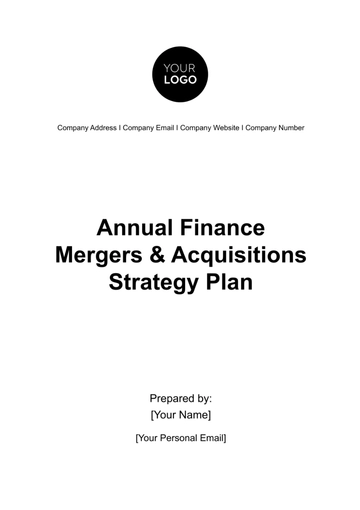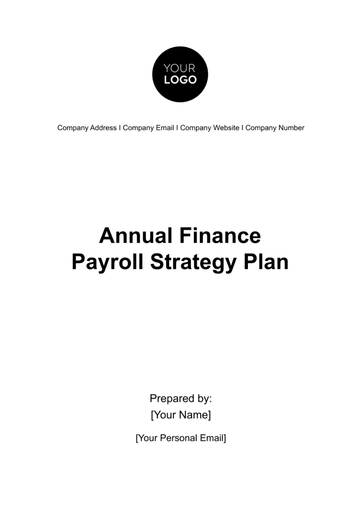Free Employee Annual Work Plan

Prepared by: [YOUR NAME]
I. Introduction
A. Purpose of the Plan
1. To align individual goals with the overall objectives of [Your Company Name].
2. To provide a framework for performance evaluation and feedback.
B. Scope
This plan covers the objectives and responsibilities of [Your Company Name] employees for the upcoming year.
II. Goals and Objectives
Increase productivity by 10%.
Enhance customer satisfaction ratings by 15%.
Streamline internal processes to reduce operational costs by 12%.
III. Key Responsibilities
A. General Responsibilities
Attend all team meetings and training sessions.
Adhere to company policies and procedures.
B. Specific Responsibilities
[Name]:
Manage a portfolio of clients and ensure their satisfaction.
Collaborate with the marketing team to develop promotional campaigns.
[Name]:
Conduct market research to identify new business opportunities.
Prepare reports on key performance metrics for management review.
IV. Development and Training
A. Training Needs Assessment
Conducting a thorough assessment of employees' skills and competencies is essential to identify any gaps that may hinder their performance or hinder the achievement of organizational goals. This assessment will involve evaluating both technical skills, such as proficiency in software tools, and soft skills, such as communication and leadership abilities. By understanding the specific training needs of each employee, tailored development plans can be created to address these gaps effectively.
B. Training Plan
Once the training needs have been identified, a comprehensive training plan will be developed to address these requirements. This plan will include various training modalities, such as workshops, seminars, online courses, and on-the-job training sessions. The goal is to provide employees with the necessary knowledge and skills to excel in their roles and contribute to the overall success of the organization. Additionally, opportunities for professional certifications or advanced degrees may be explored to further enhance employees' expertise and career growth prospects.
V. Performance Evaluation
A. Criteria for Evaluation
The evaluation of employee performance will be based on predefined criteria that align with the objectives outlined in the annual work plan. These criteria may include quantitative metrics, such as sales targets or project milestones, as well as qualitative factors, such as teamwork and innovation. By establishing clear and measurable criteria, both employees and managers can objectively assess performance and identify areas for improvement.
B. Evaluation Process
Performance evaluations will be conducted on a quarterly basis to provide regular feedback and support ongoing development efforts. During these evaluations, managers will review employees' progress towards their goals, discuss any challenges or obstacles they may be facing, and identify opportunities for further growth and improvement. Feedback will be constructive and focused on helping employees maximize their potential while addressing any performance issues in a timely and effective manner.
VI. Rewards and Recognition
A. Recognition Program
Recognizing and rewarding employee achievements is crucial for maintaining high levels of motivation and engagement. As such, an employee recognition program will be implemented to acknowledge outstanding performance and contributions to the organization. This program may include various forms of recognition, such as employee of the month awards, public praise during team meetings, or monetary bonuses for exceptional performance. By celebrating success and highlighting the value of employees' contributions, morale and productivity can be boosted across the organization.
B. Incentives
In addition to formal recognition, incentives may also be offered to incentivize employees to exceed expectations and go above and beyond in their roles. These incentives could take the form of financial rewards, such as bonuses or profit-sharing arrangements, or non-monetary perks, such as additional vacation days or flexible work arrangements. By aligning incentives with organizational goals and individual performance, employees will be motivated to consistently perform at their best and drive positive results for the company.
VII. Conclusion
In conclusion, the Employee Annual Work Plan serves as a roadmap for achieving organizational objectives while fostering individual growth and development. By clearly outlining goals, responsibilities, and expectations, employees are empowered to make meaningful contributions to the success of [Your Company Name]. Through ongoing training and development initiatives, we ensure that our team members have the skills and knowledge needed to excel in their roles and adapt to evolving business needs.
Performance evaluations provide valuable opportunities for feedback and reflection, enabling employees to track their progress and identify areas for improvement. By fostering a culture of continuous learning and improvement, we cultivate a high-performance workforce that is committed to delivering exceptional results.
In the coming year, we remain committed to supporting our employees' growth and success while driving towards our shared goals and objectives. Together, we will continue to innovate, collaborate, and exceed expectations, ensuring the continued success and prosperity of [Your Company Name].
- 100% Customizable, free editor
- Access 1 Million+ Templates, photo’s & graphics
- Download or share as a template
- Click and replace photos, graphics, text, backgrounds
- Resize, crop, AI write & more
- Access advanced editor
Efficiently organize your team's goals and objectives with the Employee Annual Work Plan Template, provided by Template.net. This customizable document allows you to outline tasks, set deadlines, and allocate resources seamlessly. With its downloadable and printable format, you can easily distribute and track progress. Plus, edit with ease using our AI Editor Tool, ensuring adaptability as your projects evolve.
You may also like
- Finance Plan
- Construction Plan
- Sales Plan
- Development Plan
- Career Plan
- Budget Plan
- HR Plan
- Education Plan
- Transition Plan
- Work Plan
- Training Plan
- Communication Plan
- Operation Plan
- Health And Safety Plan
- Strategy Plan
- Professional Development Plan
- Advertising Plan
- Risk Management Plan
- Restaurant Plan
- School Plan
- Nursing Home Patient Care Plan
- Nursing Care Plan
- Plan Event
- Startup Plan
- Social Media Plan
- Staffing Plan
- Annual Plan
- Content Plan
- Payment Plan
- Implementation Plan
- Hotel Plan
- Workout Plan
- Accounting Plan
- Campaign Plan
- Essay Plan
- 30 60 90 Day Plan
- Research Plan
- Recruitment Plan
- 90 Day Plan
- Quarterly Plan
- Emergency Plan
- 5 Year Plan
- Gym Plan
- Personal Plan
- IT and Software Plan
- Treatment Plan
- Real Estate Plan
- Law Firm Plan
- Healthcare Plan
- Improvement Plan
- Media Plan
- 5 Year Business Plan
- Learning Plan
- Marketing Campaign Plan
- Travel Agency Plan
- Cleaning Services Plan
- Interior Design Plan
- Performance Plan
- PR Plan
- Birth Plan
- Life Plan
- SEO Plan
- Disaster Recovery Plan
- Continuity Plan
- Launch Plan
- Legal Plan
- Behavior Plan
- Performance Improvement Plan
- Salon Plan
- Security Plan
- Security Management Plan
- Employee Development Plan
- Quality Plan
- Service Improvement Plan
- Growth Plan
- Incident Response Plan
- Basketball Plan
- Emergency Action Plan
- Product Launch Plan
- Spa Plan
- Employee Training Plan
- Data Analysis Plan
- Employee Action Plan
- Territory Plan
- Audit Plan
- Classroom Plan
- Activity Plan
- Parenting Plan
- Care Plan
- Project Execution Plan
- Exercise Plan
- Internship Plan
- Software Development Plan
- Continuous Improvement Plan
- Leave Plan
- 90 Day Sales Plan
- Advertising Agency Plan
- Employee Transition Plan
- Smart Action Plan
- Workplace Safety Plan
- Behavior Change Plan
- Contingency Plan
- Continuity of Operations Plan
- Health Plan
- Quality Control Plan
- Self Plan
- Sports Development Plan
- Change Management Plan
- Ecommerce Plan
- Personal Financial Plan
- Process Improvement Plan
- 30-60-90 Day Sales Plan
- Crisis Management Plan
- Engagement Plan
- Execution Plan
- Pandemic Plan
- Quality Assurance Plan
- Service Continuity Plan
- Agile Project Plan
- Fundraising Plan
- Job Transition Plan
- Asset Maintenance Plan
- Maintenance Plan
- Software Test Plan
- Staff Training and Development Plan
- 3 Year Plan
- Brand Activation Plan
- Release Plan
- Resource Plan
- Risk Mitigation Plan
- Teacher Plan
- 30 60 90 Day Plan for New Manager
- Food Safety Plan
- Food Truck Plan
- Hiring Plan
- Quality Management Plan
- Wellness Plan
- Behavior Intervention Plan
- Bonus Plan
- Investment Plan
- Maternity Leave Plan
- Pandemic Response Plan
- Succession Planning
- Coaching Plan
- Configuration Management Plan
- Remote Work Plan
- Self Care Plan
- Teaching Plan
- 100-Day Plan
- HACCP Plan
- Student Plan
- Sustainability Plan
- 30 60 90 Day Plan for Interview
- Access Plan
- Site Specific Safety Plan
